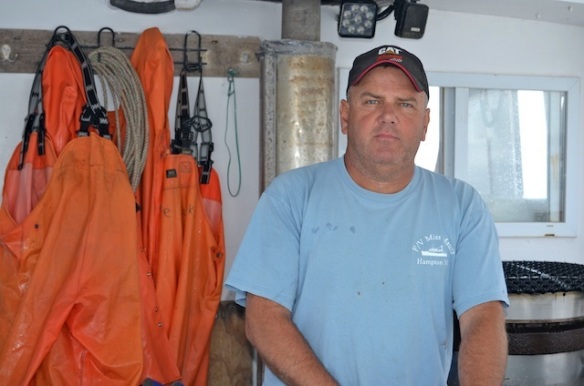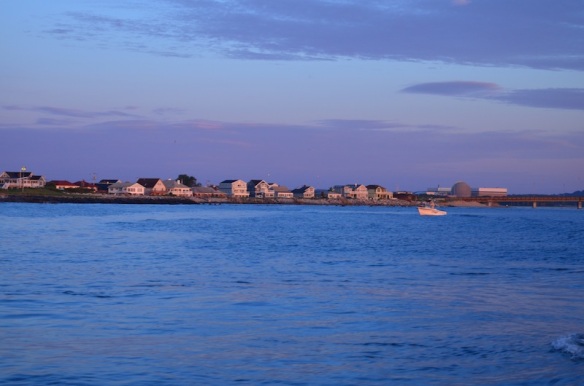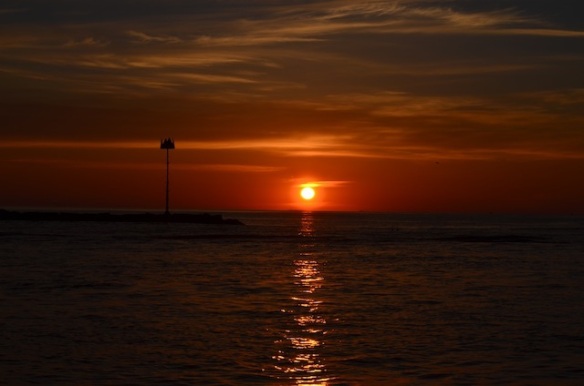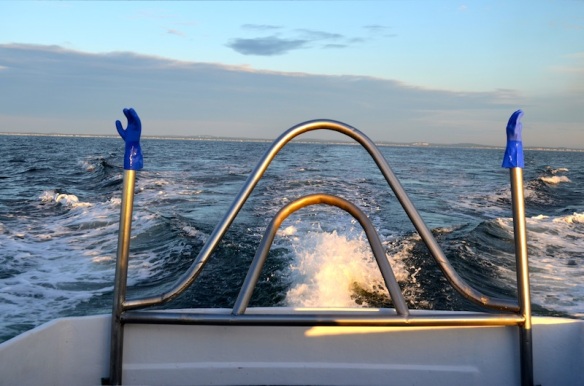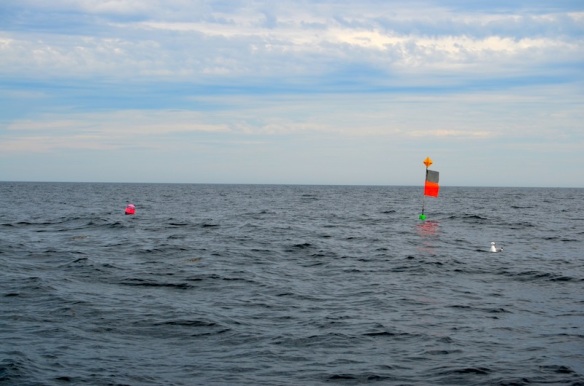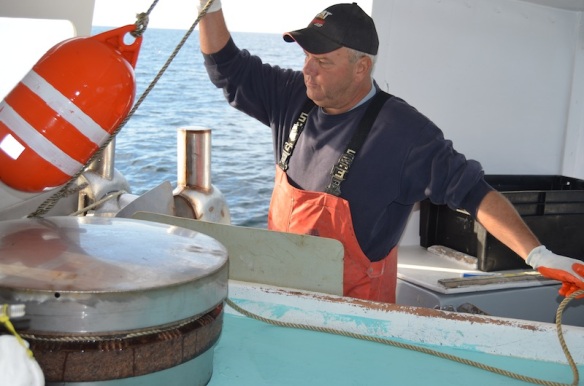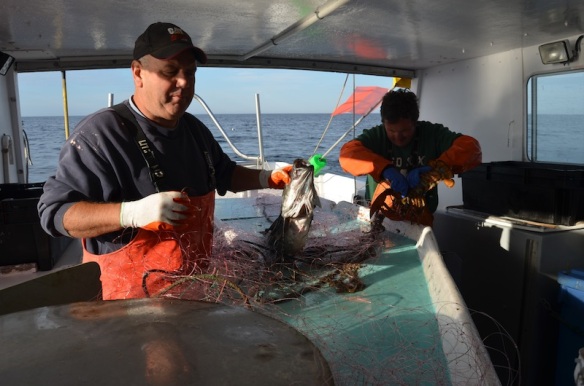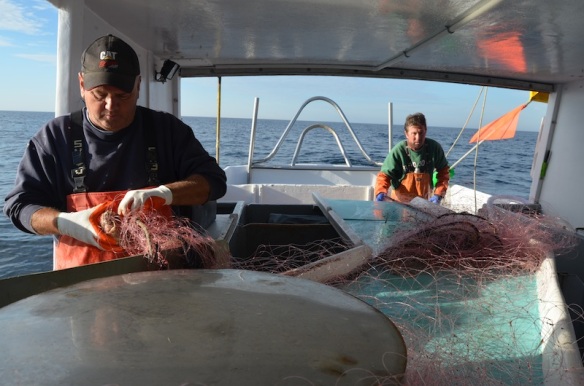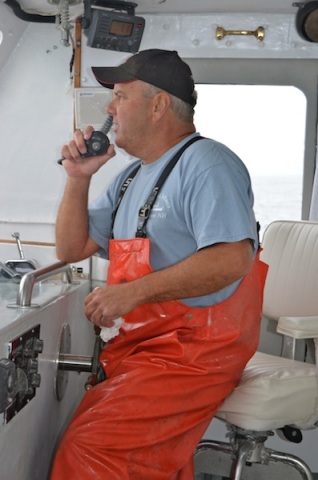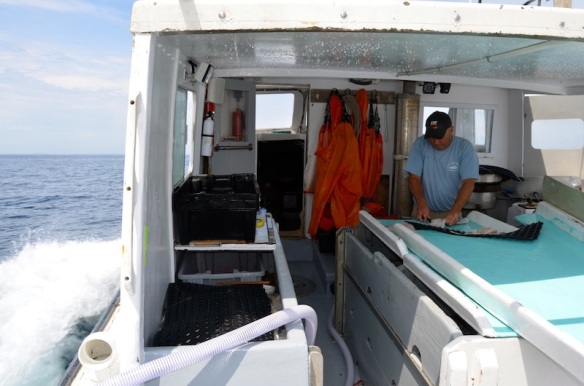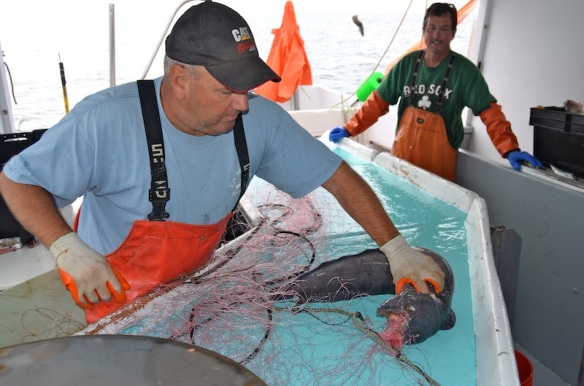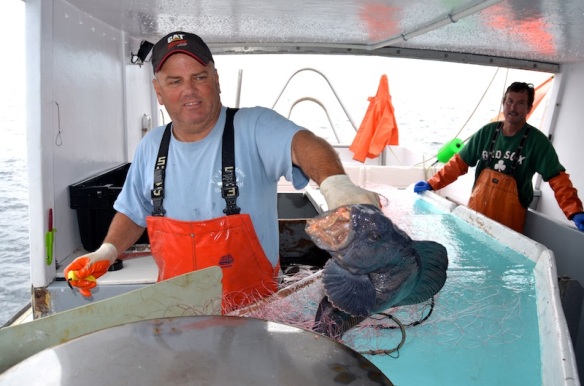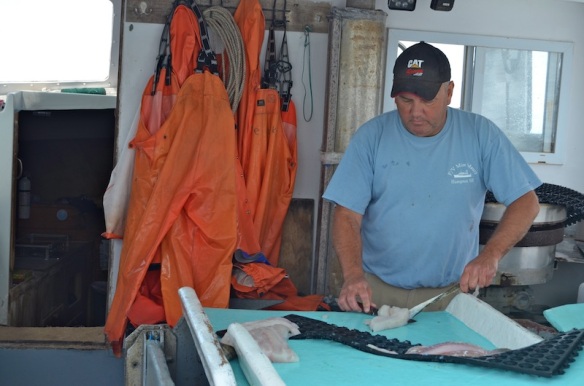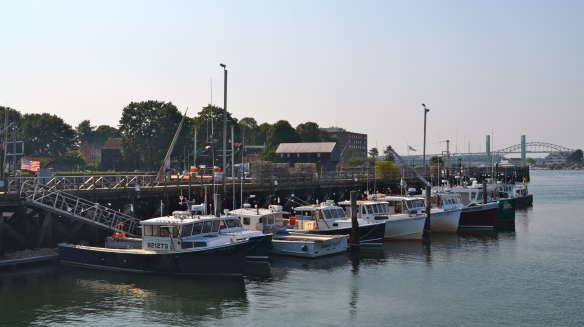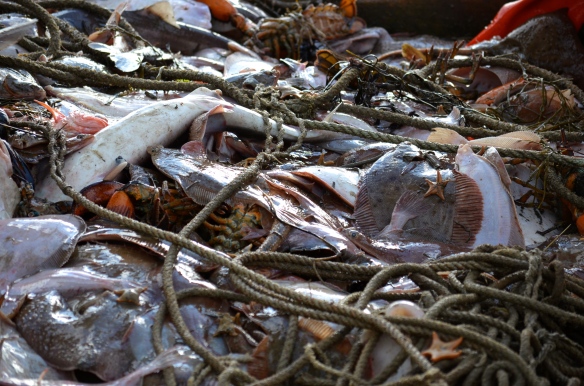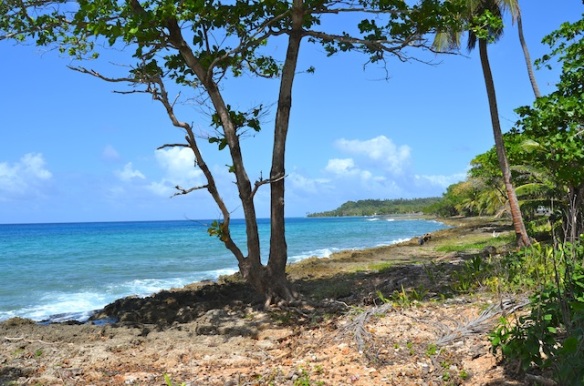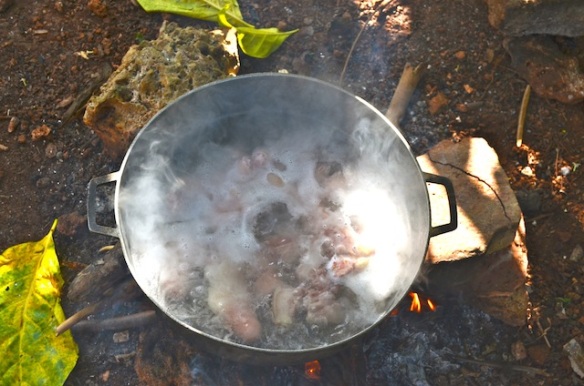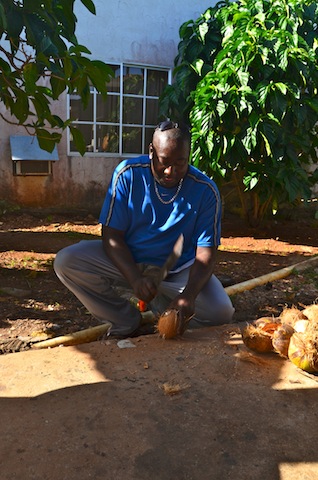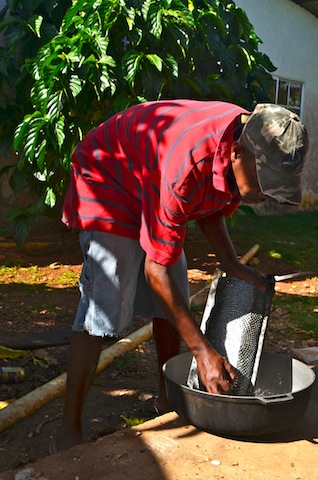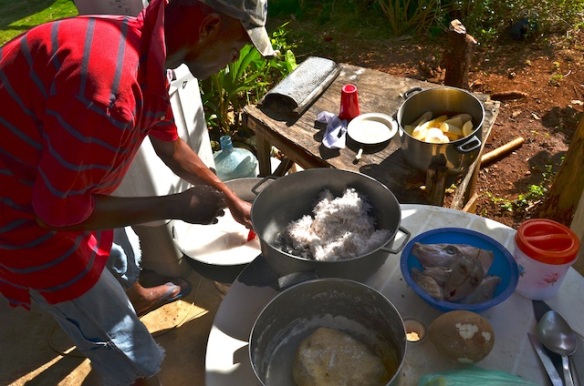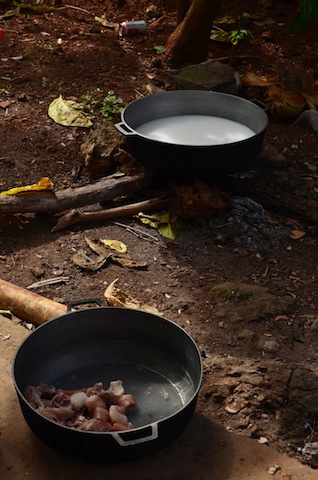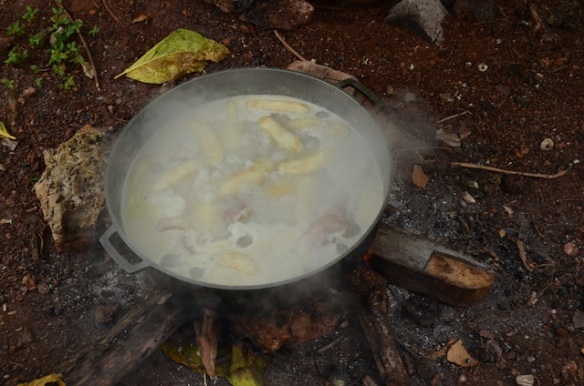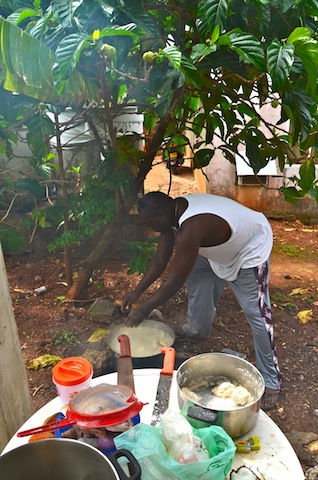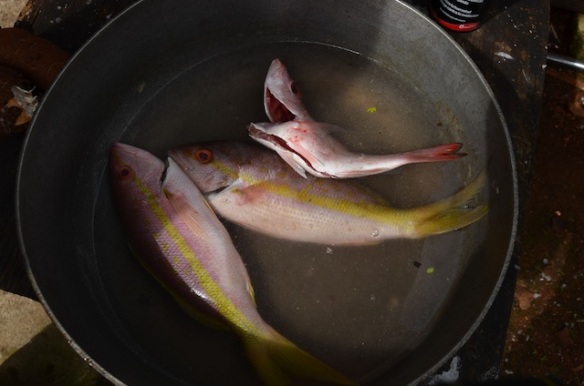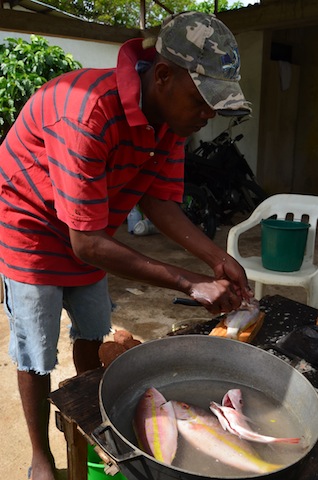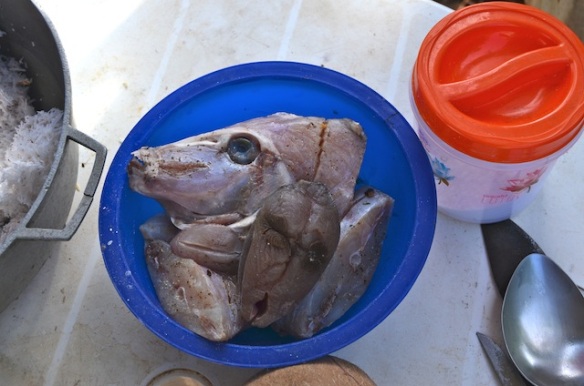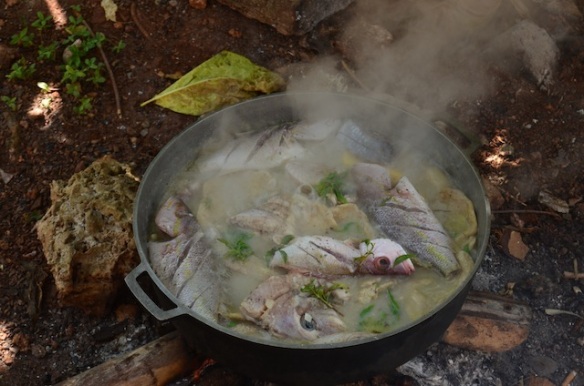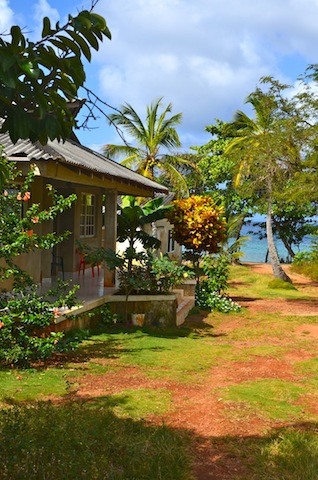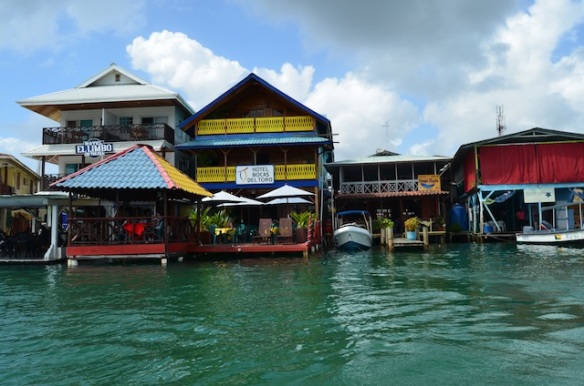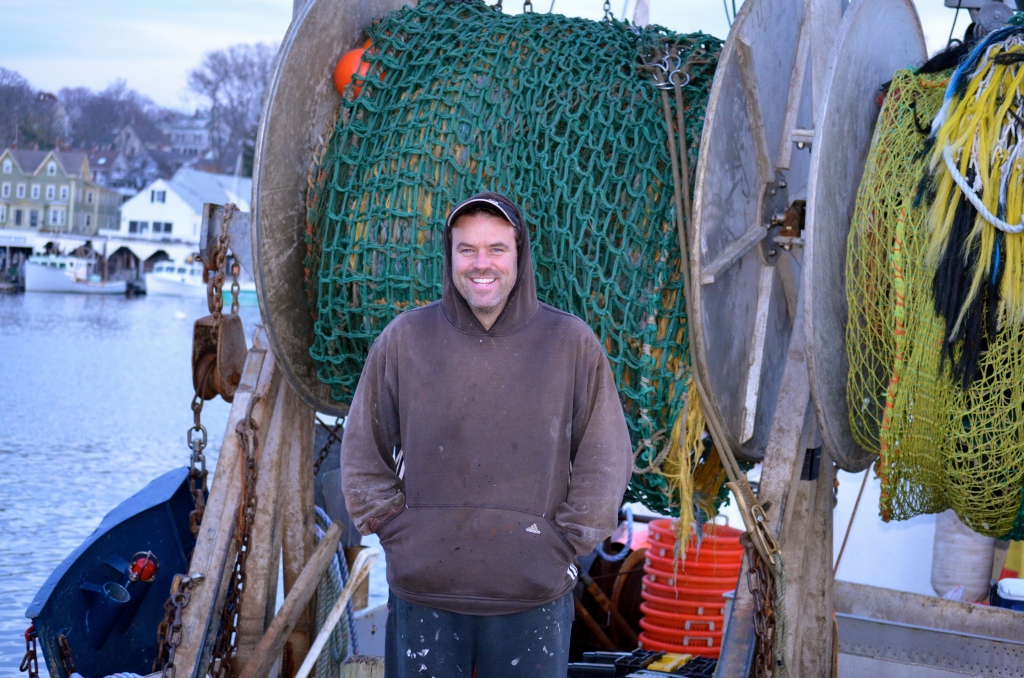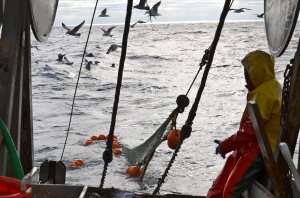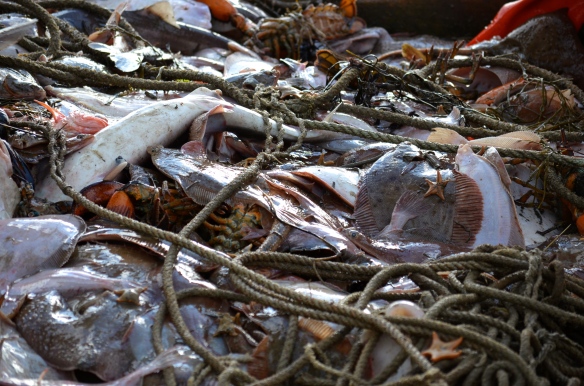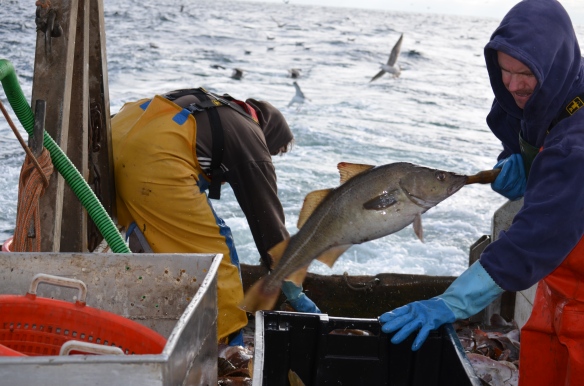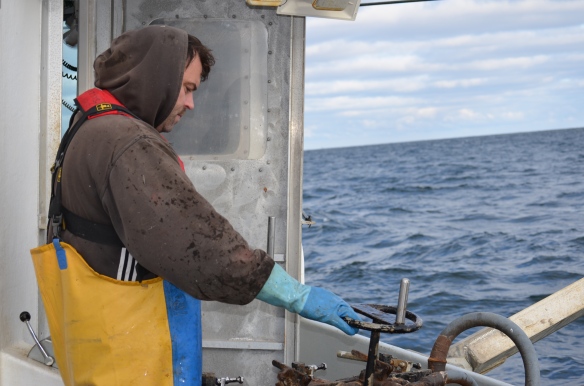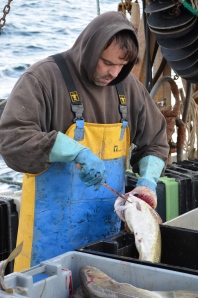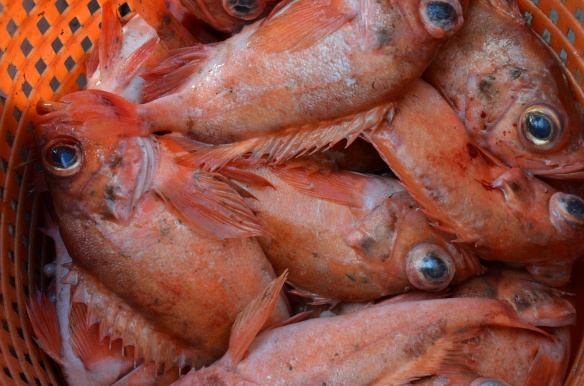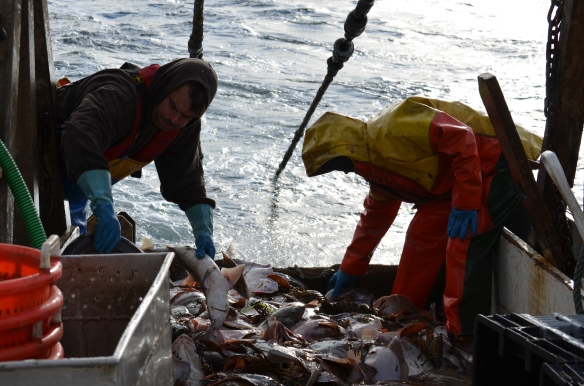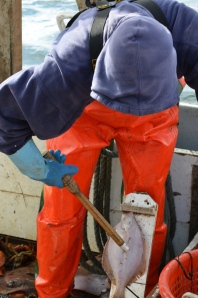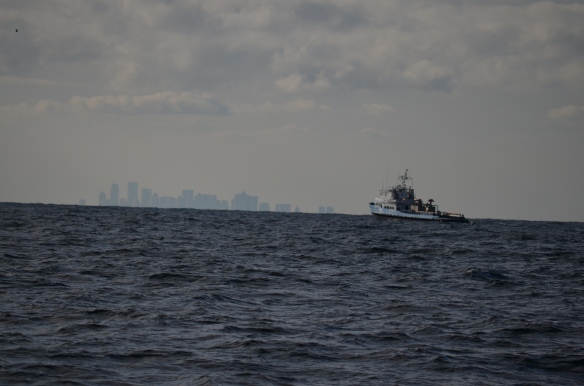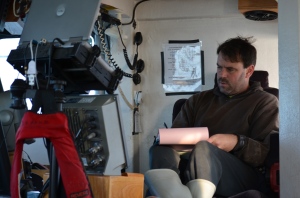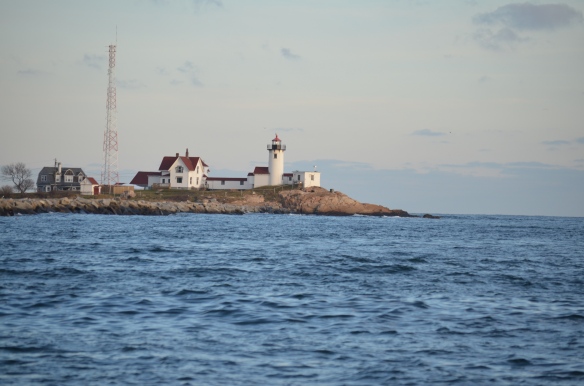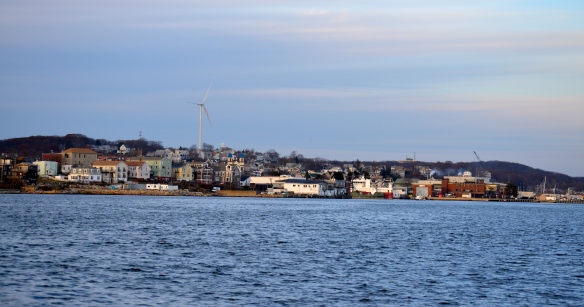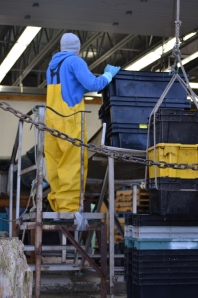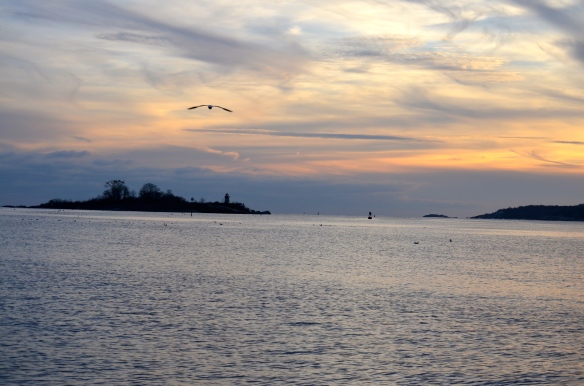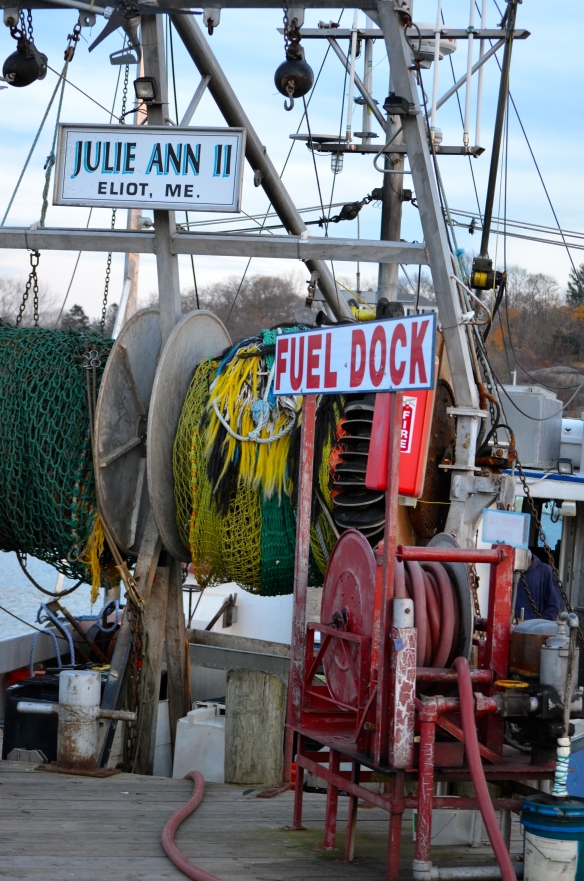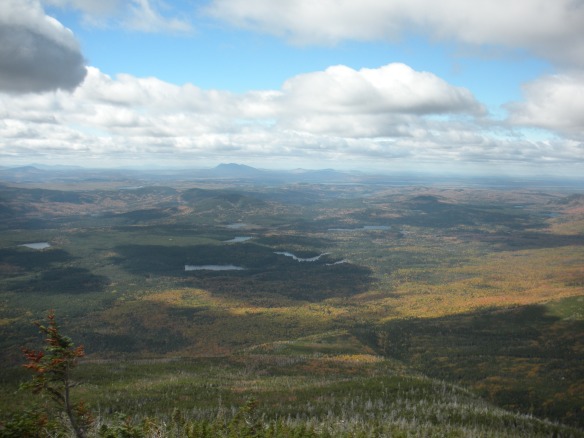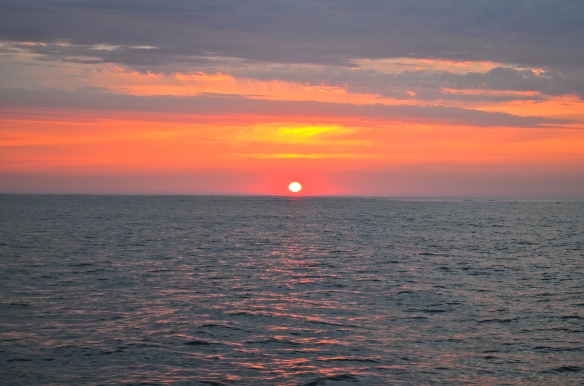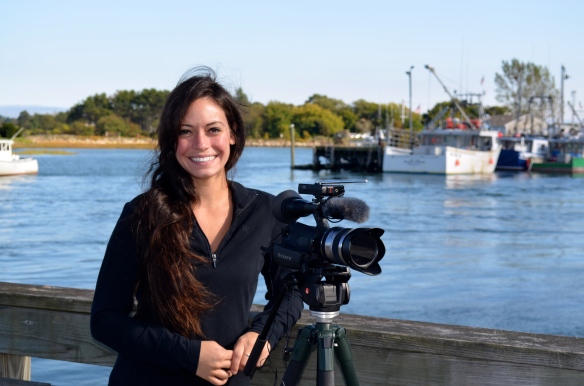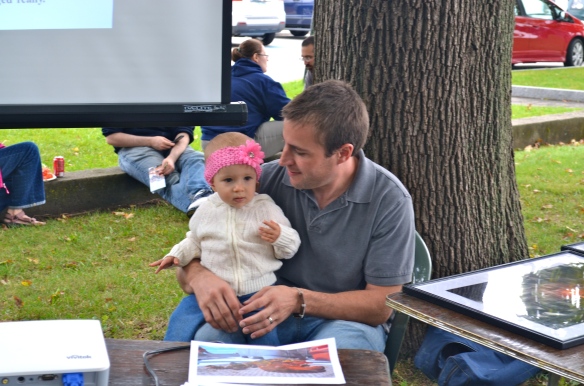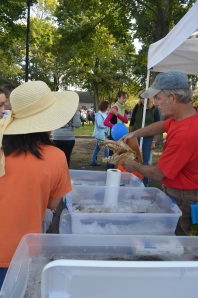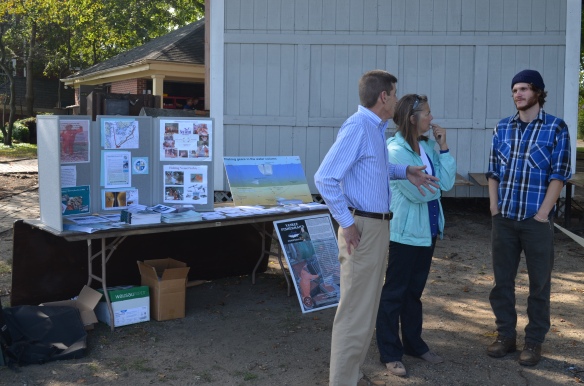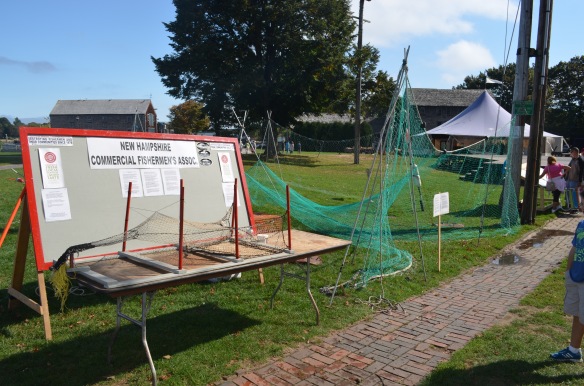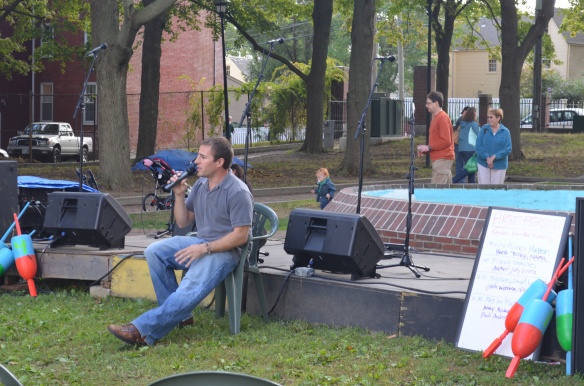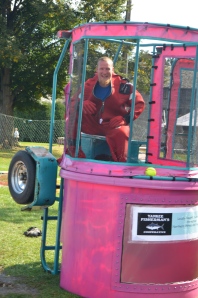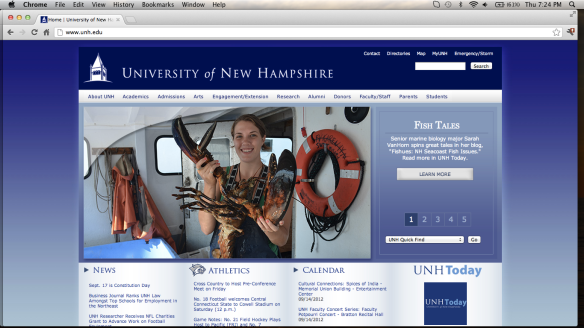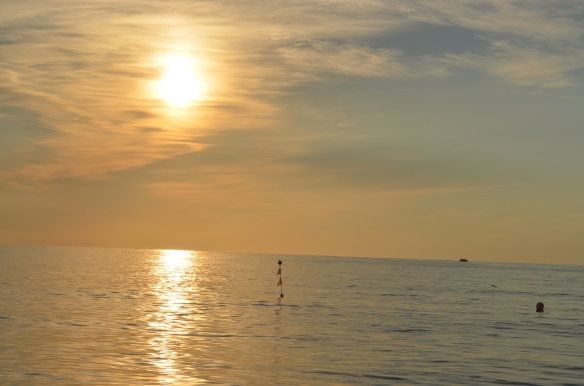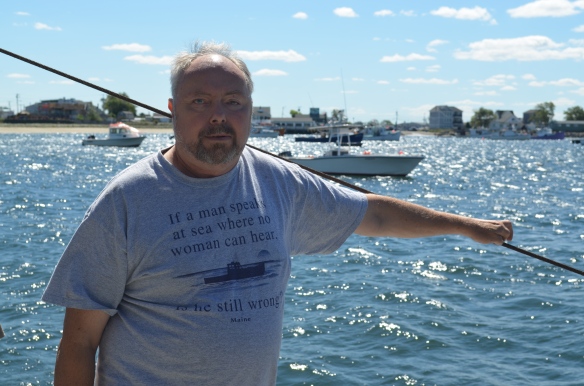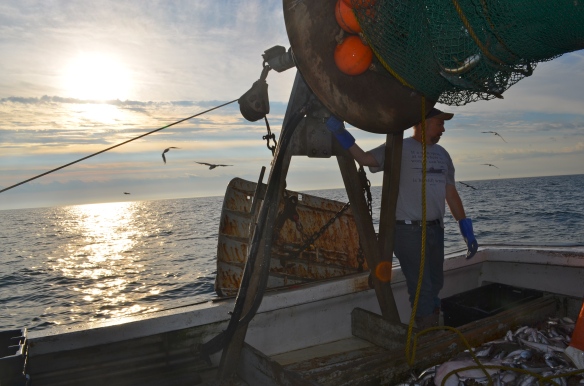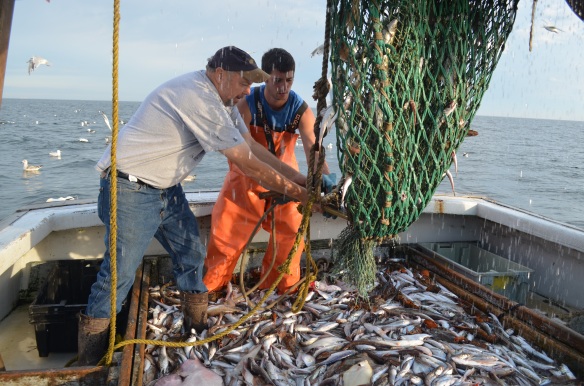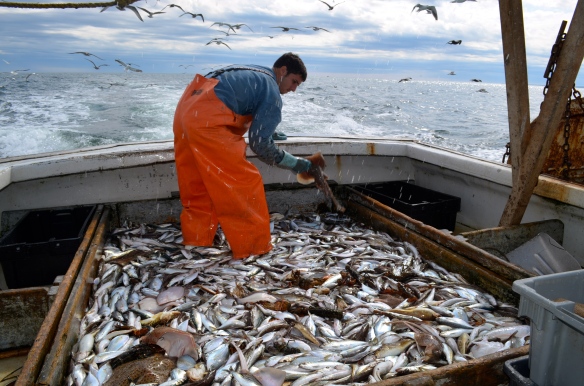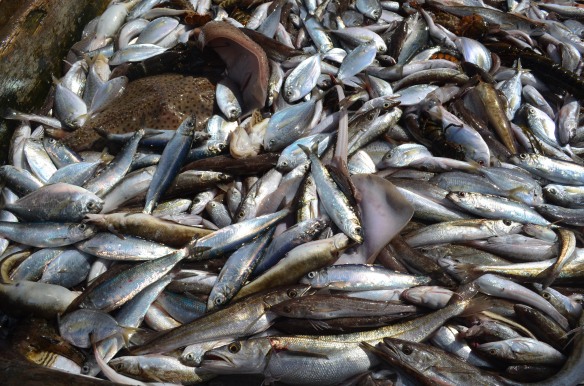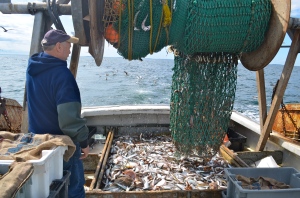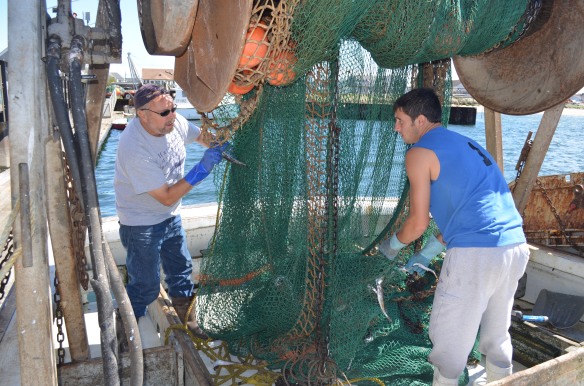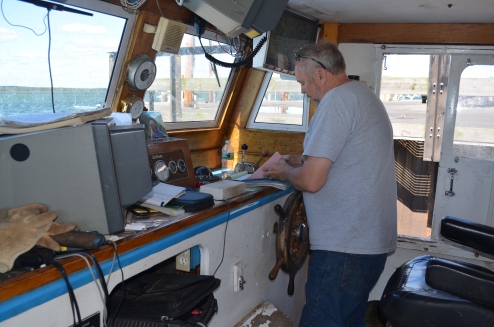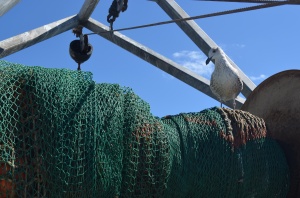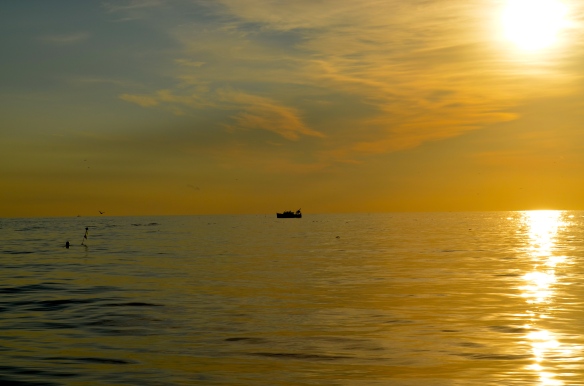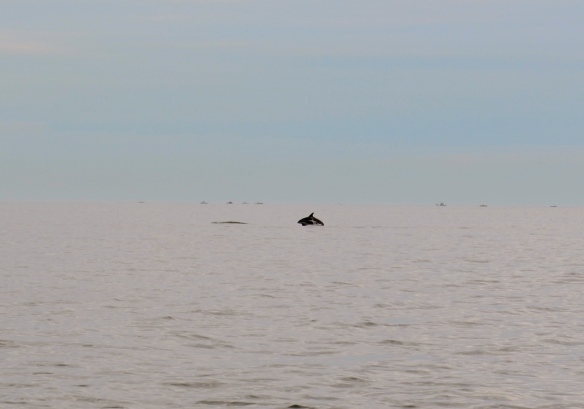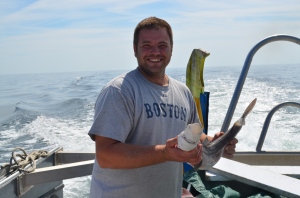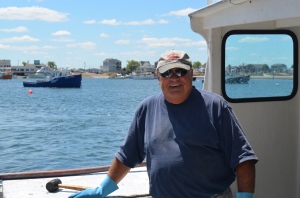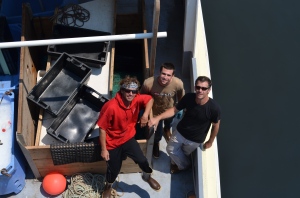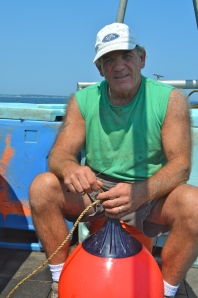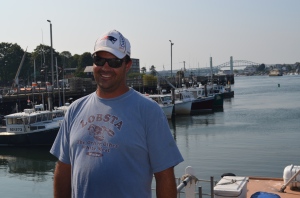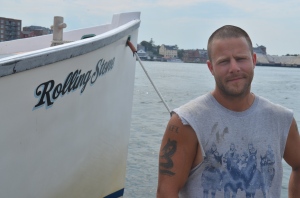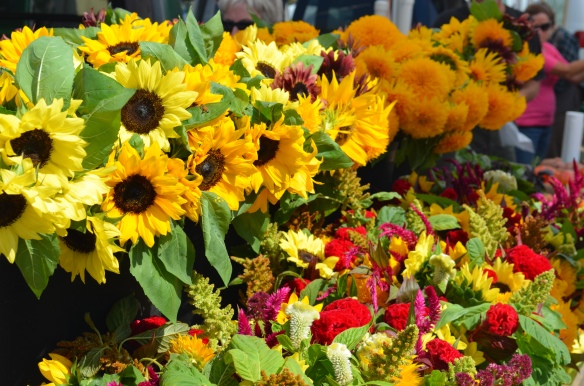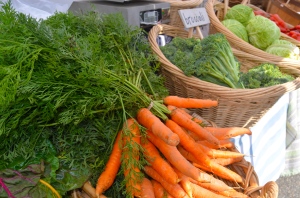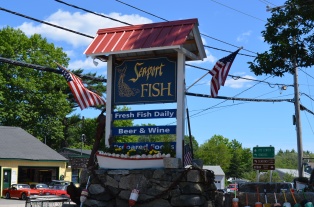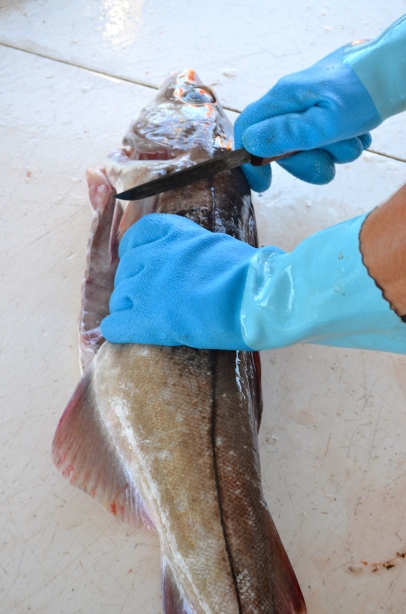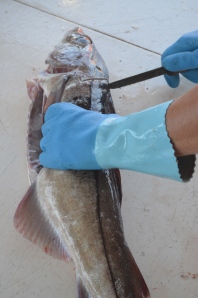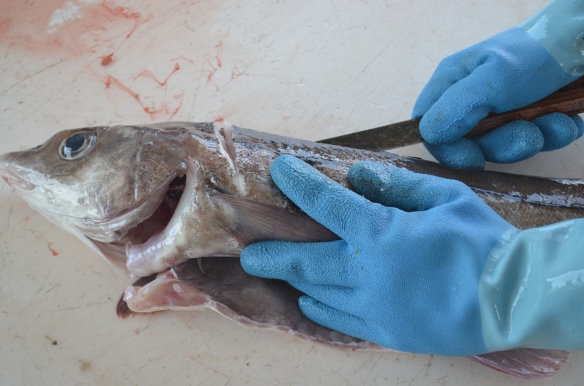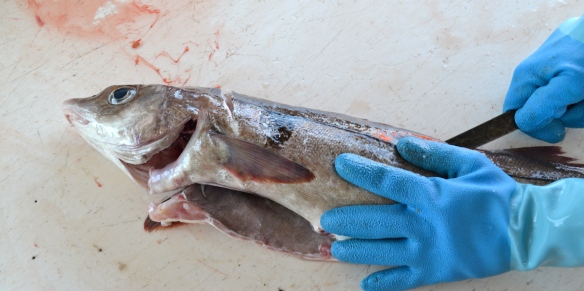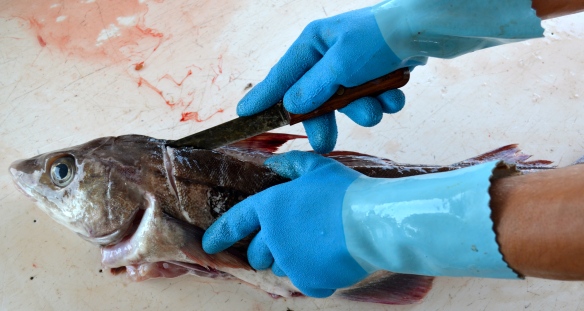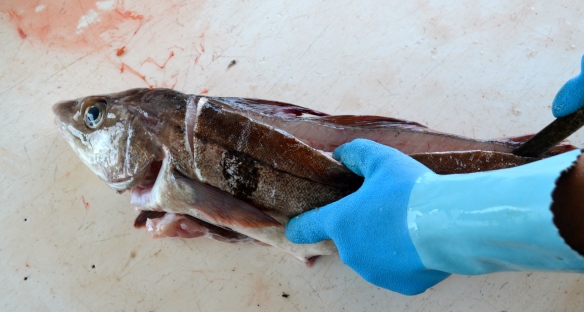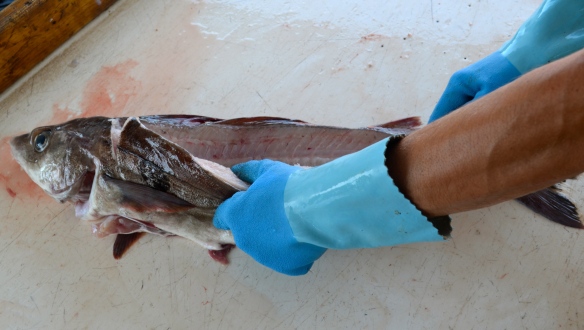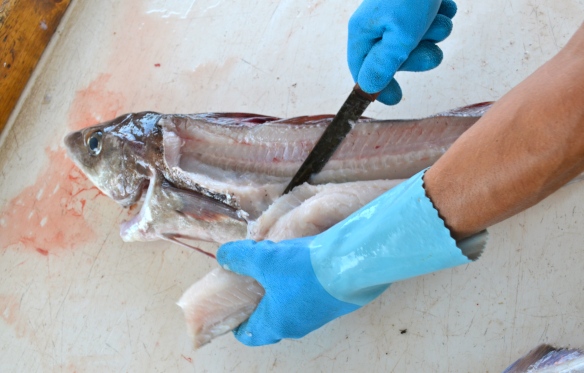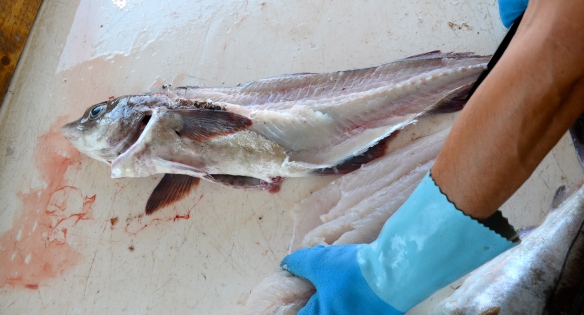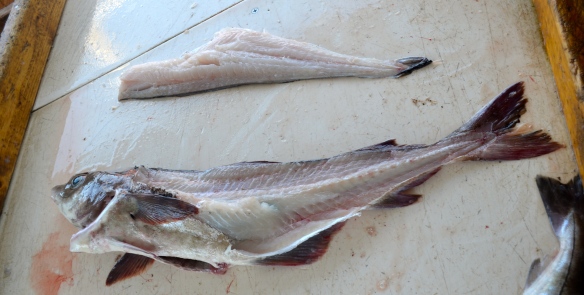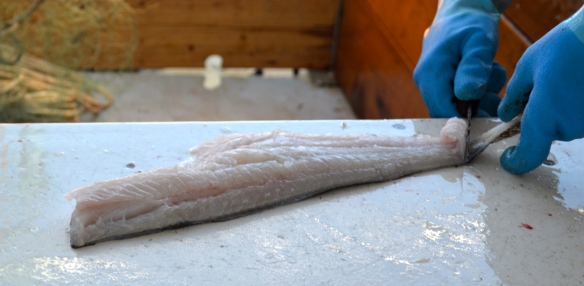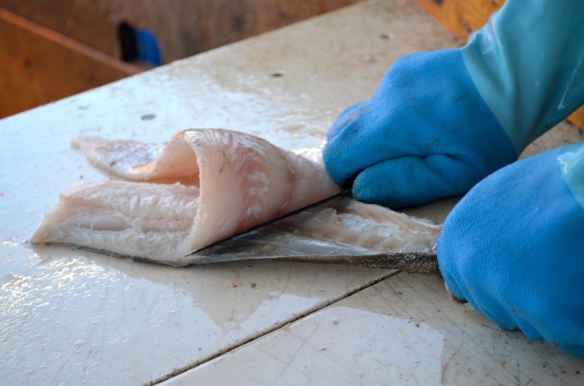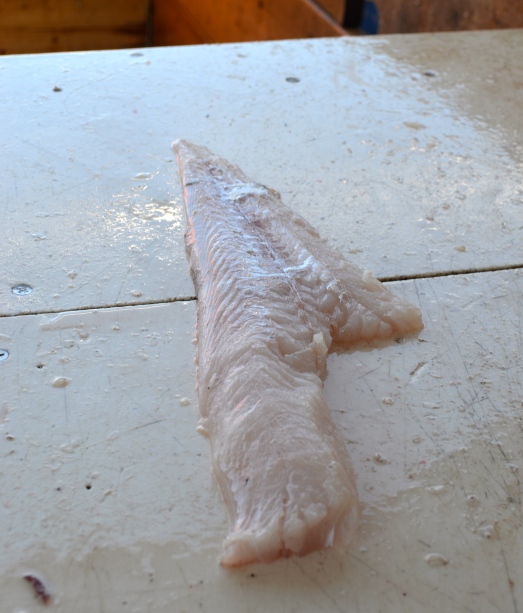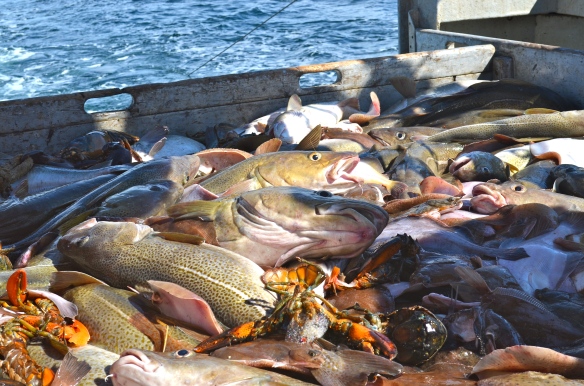PETE LAGERSTROM
Fisherman: GILLNETTER
“We haven’t been catching much,” shares fishermen Pete Lagerstrom, as he pushes the dinghy away from the dock, the morning sun just beginning to peek past the horizon in a glow of orange. “We got 1 box of fish yesterday.” He wastes no time, jumping straight to the catch: The fish just aren’t around. “It’s starting out to be the worst fishing year yet.” We approach the starboard side of his 41 foot Bruno & Stillman fishing vessel and climbs aboard. His deckhand Ronnie scrambles around preparing the deck as Pete starts the engine, unties and we soon exit Hampton Harbor off to deeper waters in search of fish.
Pete has spent a lifetime on the water, always having fished as a kid, and he grew up working on party boats, as did his brother. He got his captains license early on and captained party boats for several years until he got tired of the crowd associated with the profession and their antics. At the time his friends were making good money fishing and he decided he would make a go of it. He’s been gillnetting on and off over 25 years now. When asked his favorite thing about fishing, over the hum of the engine he responds, “Just being out on the water. Even a bad day fishing is a good day. Like yesterday, we didn’t catch nothing…but it was a beautiful day. I had fun.”
Lagerstrom typically fishes 3 or 4 strings 16-20 miles offshore 7 days a week from June to Christmas, but worries this year may be different. With the 78% cut in fishermen’s cod quota this new fishing year, most of our NH fishermen are faced with a severe reduction in the total allowable catch they are able to land at the docks each day. With the dramatic cut in Pete’s cod quota he fears he may be done a lot earlier in the season this fishing year and may be forced to consider other work. Though he’s on the hunt for a good day fishing, in reality it could end up shortening his season. He comments that if he were able to catch 2,000 pounds of fish in that one day, that he probably would end up hauling all his gear and going home so as not to catch all his quota in the first month of fishing. Such tactics make for a conflicting day on the water.
Fellow fisherman Ricky Anderson comes through on the radio with complaints of only 300 pounds of dogfish on his first string of the day. Pete reaches for the radio to respond. “That’s weird. We had 1,000 pounds there yesterday.” He checks his spiral bound notebook again for his previous day’s coordinates. “That’s the thing about sustainability,” he continues in reference to our conversation about sustainable fisheries. “It doesn’t seem very stable to me. You never know what to expect from one day to the next.”
I quickly notice the cleanliness of his boat, an anomaly for a fishing vessel.
“I think this is the cleanest boat I’ve seen yet,” I proclaim.
He breaks out laughing and repeats my comment over the radio. “You hear that boys.” He chuckles. “The cleanest boat.” Disbelief and crude remarks from surrounding fishermen are returned over radio wires. He blows his cover and hands back his cleanest boat award uncovering the fact that it’s the very beginning of the fishing year for him since he got a late start waiting for some paperwork to be approved.
Lagerstrom spends his winters, Christmas to April participating in his second favorite hobby after fishing: snowmobiling. He holds the title of President of the Umbagog Snowmobile Club which boasts over 1,200 members. He has been a member of the club the past 15 years. According to Pete it’s cheaper to register a snow mobile in New Hampshire if you are a member of a club; membership fees go towards grooming and maintaining the backcountry trails. He also enjoys visiting his friends in the Florida Keys during the winter where he spends his time recreational fishing. It’s not long before I discover his love affair with cold, draft beer and chicken wings. “When I retire, I want to open a chicken wing hut in the keys.” I can’t help but laugh, and he continues to go on about all the best places to acquire the best wings on the seacoast. When not traveling he resides in Hampton with his wife and their beloved golden retriever, Louis.
When I ask about how he received his nickname, Snake, within the local fleet he confesses. “I wouldn’t tell the guys what I was really catching most of the time.” He mentions he has since changed his ways and he’s quick to add, “You can’t hide anything anymore, anyway.” Typically Pete works with 2 deckhands, but with the fishing off to such a slow start, he begins the season with just one, Ronnie, who has been fishing with Pete the past 2 years. I ask him his thoughts on our new community supported fishery, NH Community Seafood. “Hopefully it will work out and be a good thing for the consumers,” he pauses, “and hopefully the fishermen too.” He asks me a few questions about how it works and how it’s been going. “I just can’t believe you got them eating dogfish,” he exclaims. “And they like it?” I smile big and nod. You can see him thinking it over, the thought of eating dogfish shark, an under-appreciated fish nearly absent from local markets throughout the northeast. “Huh…maybe I’ll try it some time,” he says.
From Fisherman Pete Lagerstrom to NH Seafood Consumers:
“Do you know where tilapia comes from? Stop eating it. And the next time you pick up a bag of shrimp, think about where it’s from.”

